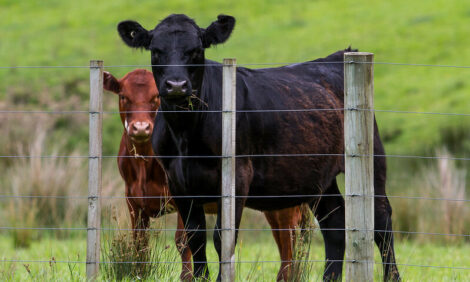



ARS: Shining Torch on Bovine Viral Diarrhea Virus
US - Bovine Viral Diarrhea Virus (BVDV) is a costly disease that affects cattle and other ruminants. The virus has many nasty effects, including fever, diarrhea, respiratory and reproductive disease, abortion, birth defects and death.The national economic impact of the disease has not been assessed in the United States, although one document from the U.S. Department of Agriculture (USDA) Animal and Plant Health Inspection Service (APHIS) estimates that acute BVDV could result in losses of $50 to $100 per cow.
At the National Animal Disease Center (NADC) in Ames, Iowa, Agricultural Research Service (ARS) microbiologist Julia Ridpath is leading important research to help control BVDV and limit its devastating economic effects.
BVDV infections may be acute (intense, but short) or persistent--a characteristic that makes the virus particularly difficult to control. Cattle can develop persistent infections (PI) when exposed in utero within the first 125 days of gestation. Once born, they shed the virus, infecting other animals in the herd.
* "The goal is to provide producers with robust tests that are highly sensitive and specific" |
|
ARS microbiologist Julia Ridpath
|
Some of the NADC studies are uncovering information that will be crucial for developing effective prevention strategies. One such study is exploring whether PI deer can serve as vectors for introducing BVDV into uninfectedcattle herds. Preliminary results show that cattle and deer have similar responses to the virus.
"We have shown that BVDV causes reproductive disease in deer that is similar to the reproductive disease seen in cattle following BVDV infection," Ridpath says. Identifying potential virus reservoirs in wildlife is a critical step toward preventing transmission to cattle.
A related study has led to the discovery in pronghorn antelope and swine of viruses similar to those found in cattle and deer. Understanding the effects of these BVDV-like viruses and how they're transmitted could help scientists develop superior prevention and control techniques. For example, researchers could use that information to design more successful vaccines and diagnostic tests, Ridpath says.
Other NADC research is focusing on eliminating the disease after it's been introduced to a herd. Ridpath and her colleagues have designed improved disease models, using more virulent virus strains than existing models, for testing the efficacy of existing vaccines. Industry professionals have already begun testing vaccines with these models, as has APHIS.
The scientists are also comparing diagnostic test platforms for identifying PI animals.
"The goal is to provide producers with robust tests that are highly sensitive and specific," Ridpath says. She and her colleagues have found that ELISA tests (enzyme-linked immunosorbent assays) are particularly robust. ELISA tests can detect the presence of antibodies and their targets--in this case, BVDV--within a sample.
All of these studies are contributing to a growing body of knowledge and tools that will help scientists and the cattle industry successfully combat this viral threat.
Further Reading
| - | Find out more information on Bovine Diarrhoea Virus (BVDV) by clicking here. |
TheCattleSite News Desk


